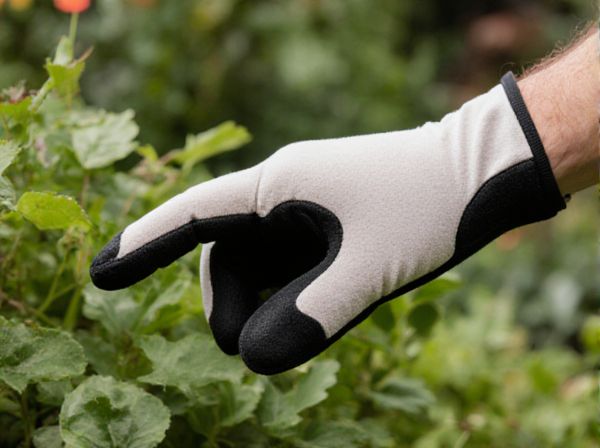
Foggers vs Misters Illustration
Foggers create a fine, dense mist that rapidly increases humidity and cools the air in a greenhouse, ideal for sensitive plants requiring constant moisture. Misters produce larger droplets that settle more quickly, providing gentle hydration mainly for leaf surfaces without significantly altering humidity levels. Choosing between foggers and misters depends on specific plant needs, desired humidity control, and the cooling effect required in the greenhouse environment.
Table of Comparison
| Feature | Foggers | Misters |
|---|---|---|
| Purpose | Disperse fine droplets for rapid humidity increase | Spray larger water droplets for consistent moisture |
| Droplet Size | 1-30 microns (ultra-fine) | 30-100 microns (fine mist) |
| Humidity Control | Effective for quick, short bursts | Maintains steady humidity levels over time |
| Coverage Area | Smaller zones, targeted use | Larger areas, uniform distribution |
| Water Usage | Lower volume, efficient for humidity spikes | Higher volume, continuous moisture supply |
| Maintenance | Requires frequent cleaning to prevent clogging | Less prone to clogging, easier upkeep |
| Ideal Greenhouse Use | Seedlings, propagation areas needing humidity boost | Mature plants, environments needing stable moisture |
Understanding Foggers and Misters: Key Differences
Foggers release fine droplets that create a dense mist, ideal for maintaining high humidity levels and thorough coverage in large greenhouse areas. Misters produce larger droplets with a lighter spray, suited for delicate plants requiring gentle hydration and localized humidity control. Understanding the droplet size and distribution helps optimize greenhouse microclimates for specific plant needs.
How Foggers Work in a Greenhouse Setting
Foggers in a greenhouse generate fine water droplets that create a mist, increasing humidity levels and maintaining optimal moisture for plant growth. These devices operate by forcing water through specialized nozzles at high pressure to produce a uniform fog, enhancing air circulation and reducing heat stress. The controlled humidity environment helps prevent dehydration while minimizing the risk of fungal diseases common in overly wet conditions.
The Functionality of Misters in Greenhouse Environments
Misters in greenhouse environments provide fine, controlled water droplets that increase humidity levels critical for plant transpiration and growth. Their functionality optimizes microclimate conditions by maintaining consistent moisture without over-saturating the soil, reducing the risk of mold and mildew. This precise misting supports delicate seedlings and tropical plants requiring high humidity while conserving water compared to traditional watering methods.
Benefits of Using Foggers for Plant Health
Foggers create a fine mist that enhances humidity levels uniformly, promoting optimal plant transpiration and nutrient absorption which boosts overall plant health. They reduce the risk of fungal infections by avoiding leaf saturation, unlike traditional misters, making them ideal for delicate plants prone to disease. Consistent microclimate control from foggers improves photosynthesis efficiency and supports vigorous plant growth in greenhouse environments.
Advantages of Misters for Humidity Control
Misters deliver fine water droplets that quickly evaporate, raising humidity more efficiently and evenly in a greenhouse environment. Their ability to maintain consistent moisture levels helps prevent plant stress and supports healthier growth by providing optimal atmosphere conditions. Compared to foggers, misters offer precise control over humidity without causing excessive wetting, reducing the risk of fungal diseases.
Foggers vs Misters: Which Offers Better Climate Control?
Foggers deliver finer water droplets that increase humidity levels more effectively in greenhouse environments, creating a consistent microclimate for sensitive plants. Misters produce larger droplets that provide rapid cooling but may not maintain uniform humidity as efficiently as foggers. For precise climate control, foggers typically offer superior performance by stabilizing moisture and temperature simultaneously.
Suitability of Foggers and Misters for Different Plant Types
Foggers provide fine mist suitable for sensitive seedlings and tropical plants requiring high humidity without waterlogging the soil, promoting healthier growth in moisture-loving species. Misters deliver larger water droplets ideal for plants preferring moderate humidity and occasional leaf wetness, such as ferns and orchids, preventing fungal issues while maintaining adequate hydration. Selecting between foggers and misters depends on specific plant water and humidity needs, ensuring optimal environmental conditions for diverse greenhouse crops.
Energy and Water Efficiency: Comparing Foggers and Misters
Foggers consume less water by producing ultra-fine droplets that quickly humidify greenhouse air, enhancing water efficiency compared to misters, which release larger droplets leading to higher evaporation rates. Energy-wise, foggers operate with lower power consumption due to their efficient misting mechanisms and reduced runtime, while misters often require more energy to sustain continuous water pressure. Choosing foggers over misters can result in significant savings on water and energy bills while maintaining optimal crop hydration in controlled environments.
Installation and Maintenance Considerations
Foggers require more complex installation, often necessitating pressurized water lines and specialized nozzles, whereas misters are simpler to install with basic hose connections. Maintenance for foggers involves regular cleaning to prevent nozzle clogging due to fine mist production, while misters demand less frequent servicing as their larger droplets reduce mineral buildup. Both systems benefit from water filtration to enhance longevity and performance in greenhouse environments.
Choosing Between Foggers and Misters for Your Greenhouse
Foggers create dense, fine droplets that increase humidity rapidly and are ideal for seedlings or humidity-loving plants, while misters produce a coarser spray suitable for general cooling and consistent moisture maintenance. Choosing between foggers and misters depends on the specific humidity levels required, plant types, and ventilation conditions within your greenhouse. Optimizing mist or fog frequency and droplet size enhances plant health, growth rates, and pathogen control.
Foggers vs Misters Infographic

 gardendif.com
gardendif.com